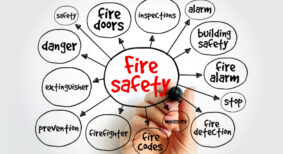For those who may not know, Victoria Park is a historic, 18-acre park located in downtown London, Ont. It dates to the 1800s when it was the site of the British garrison. Today, the park is used throughout the year as an entertainment centre and for various festivities. It is also known as a clean, comfortable, and safe place to hang out.
However, it was certainly not a safe place to hang out around 6 p.m. on August 26, 2022. That evening, a 33-year-old man was in the park when at least two others assaulted him, reportedly causing serious injuries.
Unfortunately, incidents like this happen frequently in parks all over North America. What happens next also happens frequently. If injured, the victim is taken to a hospital, a report is made, and an investigation begins, with very few leads to follow. When it comes to crime in parks, we must realize that we can’t expect police to be everywhere. As a result, police and administrators are put into a reactive position when a crime is committed. All they can do is react to the incident, try to uncover clues, talk to bystanders if there are any, and in the process, hopefully, find the culprit.
It’s not just crime that is a threat, either. In parks and outdoor spaces, there are various hazards and accidents can often happen, such as trips, slips, falls, cuts, injuries sustained on recreational equipment, and many other scenarios.
What would be more effective is for park administrators, management, and maintenance staff to be more proactive. While a proactive approach will not deter all crimes and other unfortunate incidents from occurring in a city park, it should be able to reduce the number.
A proactive approach begins with a risk assessment. Then, with the risk assessment completed, similarly important risk mitigation procedures can be implemented.
Risk assessment
A risk assessment is designed to identify potential hazards, threats, and weak points in a park — or any exterior or interior facility. However, the assessment does not begin at the park gates. Instead, it starts by looking at the bigger picture.
For instance, according to areavibes, a website that analyzes cities as to livability, schools, demographics, and crime, the Victoria Park area gets “A” and “A+” rankings in most categories, but when it comes to crime, it drops down to “C+.” Total crime here is 11 per cent higher than the Canadian national average. Knowing that this area has a higher crime rate when conducting the risk assessment will encourage security professionals to be even more watchful when looking for ways to make the park safer.
Among the other steps they should and likely will take are:
- Examine park lighting. In the case of the attack on the man, was the lighting adequate? Was the lighting dim? Was there any lighting at all? A dim or dark park space, especially in a high-crime or high-volume area, opens the door to criminal incidents, accidents, falls, and more.
- Look for confusing layouts. It should be easy for users to get out of the park, find parking lots, or get to the street, especially if they need to exit quickly.
- Hidden areas. Isolated or remote locations often become magnets for illicit activities and places for criminals to find potential victims. Because park users are often involved in recreational activities, they may be less vigilant about protecting their belongings and personal safety or less conscious of their own safety, once again opening the door to an unfortunate incident.
- Evolving loitering areas. Loitering areas are often found in hidden or improperly lit areas. All-too-often they turn into gathering spots for those looking to commit crime.
- Staff training. No risk assessment would be complete without analyzing whether staff has been trained on park security. Their job in park safety is to become aware of potential risks in the park and help prevent them.
Risk mitigation
We defined a risk assessment as a process that looks for potential hazards in a park that could provide potential for incidents, hazards, or accidents. Risk mitigation is accomplished by decreasing the threat level. Addressing the items just discussed might include:
- Installing more and brighter lighting.
- Ensuring that exits are clearly marked for users.
- Eliminating hidden locations.
- Educating staff on risk awareness and prevention procedures.
However, if the park is suffering from a high rate of incidents and accidents, additional steps may be necessary. Some that should be considered include the following:
- Installation of high-definition cameras, which are also “zero light” systems. These cameras are triggered by movement, and zero-light cameras can provide clear video footage of the park, day or night.
- Installing geo-fencing around open or less secure areas. Geo-fences are virtual fences and imaginary boundaries. They notify park administrators if, for instance, someone enters the park after it is closed or approaches areas off-limits to park users.
- Unmanned Aerial Vehicles (UAVs), also known as drones, allow administrators to see aerial photos of their park quickly and discreetly. They can help ensure public safety, look for “lost” children, monitor animal life in the park, and detect potential threats to the park and those using it.
Canada is in a very enviable position. Compared to most other countries, crime, in general, has been going down. According to Statista, which tracks statistics like this, Canada’s crime rate has steadily decreased since 2003. However, that does not mean it does not happen, and accidents and other hazards are an everyday occurrence.
Administrators must proactively approach park safety, and taking steps now will pay dividends in the future, in Canada and all North America.
Johnathan Tal is CEO of TAL Global. Based in Silicon Valley, TAL Global is a leading risk management, security consulting, and investigative agency serving clients worldwide. The company has a large client base, focusing on the High-Tech, Hospitality, Manufacturing, and Financial industries. Tal can be reached through his company website at www.talglobal.com.









